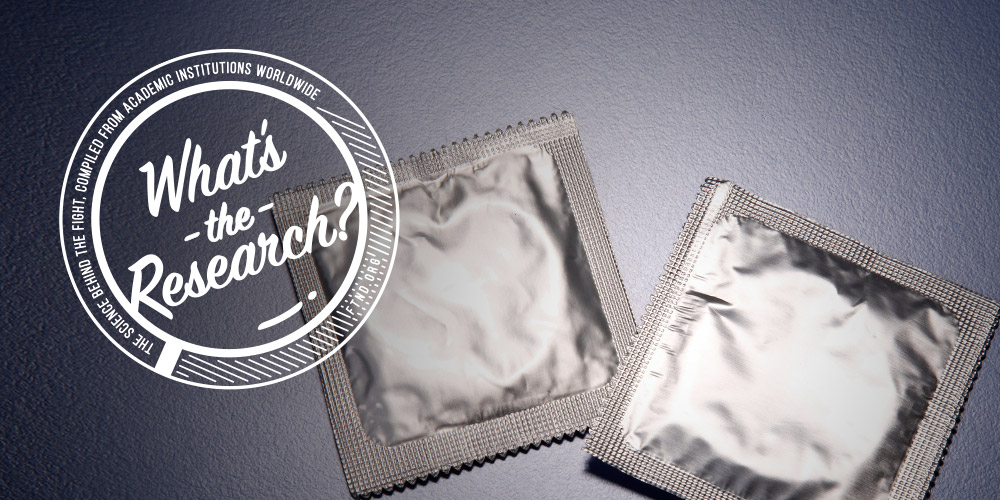Decades of studies from respected academic institutions, have demonstrated significant impacts of porn consumption for individuals, relationships, and society. "What’s the Research" aims to shed light on the expanding field of academic resources that showcase porn’s harms in a variety of ways. Below are selected excerpts from published studies on this issue.
The full study can be accessed here.
Pornography Consumption, Perceptions of Pornography as Sexual Information, and Condom Use
Authors: Paul J. Wright, Chyng Sun, and Nicola Steffen
Published April 2018
Peer-Reviewed Journal: Journal of Sex and Marital Therapy (2018) DOI: 10.1080/0092623X.2018.1462278
Background
Consistent condom use is recommended by the International Planned Parenthood Federation (2012) and the World Health Organization (2018) to prevent sexually transmitted infections and unplanned pregnancies. Yet many sexually active individuals do not use condoms consistently. Pornography has been considered a potential source of sex education and learning across a range of sexual-risk behaviors (Hald, Seaman, & Linz, 2014; Ward, Lippman, Erickson, & Giaccardi, 2016). Additional research is needed, however, to ascertain how and in what ways frequency of pornography consumption and perceiving pornography as a source of sexual information influence sexual health behaviors.
The present study examines associations between pornography consumption, perceptions of pornography as sexual information, and condom use in a heterosexual sample of sexually active German adults who were not in monogamous relationships. Recent content analyses suggest that condom use is rare in popular, heterosexual-targeted pornography. A study published in 2008 of 44 frequently rented pornographic movies found that condoms were used in just 7% of scenes directed by men and only 5% of scenes directed by women (Sun, Bridges, Wosnitzer, Scharrer, & Liberman, 2008). In 2009, a study of 50 pornographic movies from a high-volume distributor found that condoms were used in only 3% of scenes involving vaginal sex and just 10% of scenes involving anal sex (Grudzen et al., 2009). A study published in 2010 of 50 best-selling and most-rented pornographic movies found that condoms were used in just 11% of scenes (Bridges, Wosnitzer, Scharrer, Sun, & Liberman, 2010). Another study published in 2010 of 45 videos on popular pornographic websites found that condoms were used in only one video (Gorman, Monk-Turner, & Fish, 2010). More recently, a study of 100 videos on popular pornographic websites found that condoms were used in just 2% of videos (Vannier, Currie, & O’Sullivan, 2014).
Sexual scripts are guidelines for human sexual behavior derived from observing the behavior of others (Gagnon & Simon, 2005). The sexual script acquisition, activation, application model (3AM) of sexual media socialization (Wright, 2011; Wright & Bae, 2016; Wright, Bae, & Funk, 2013) has been used to hypothesize that the more individuals view attractive models in pornography having pleasurable sex without condoms, the more likely they will be to perceive sex without condoms as normative and rewarding, and the less likely they will be to use condoms (Wright, Tokunaga, & Kraus, 2016).
Methods
Participants were 200 sexually active heterosexual German adults who were not in monogamous relationships. Adult status was defined as 18 years of age or older. Heterosexual individuals were studied because the impetus for the research was the results of content analyses of heterosexual pornography.
Participants were drawn from a survey of culture and sexuality conducted over the course of an academic calendar year. Psychology, psychiatry, gender studies, and sexology departments and units from four German universities and institutes were contacted and asked to inform their students of the study. Individual German sexologists were also contacted and asked to tell their students and associates about the study. Additionally, a German gender studies group was contacted and asked to place the survey on its website. All participants were directed to an anonymous online survey. Students comprised 48.50% of participants, and non-students 51.50%. Men comprised 50.50% of participants, women 49.50%. Religious faith was important to 18.50% of participants and unimportant to 81.50%. Participants’ mean age was 28.93 (SD = 7.34; oldest participant = 61).
Results
Due to the lack of condom use in popular heterosexual pornography, sexual health researchers have begun to explore associations between the consumption of pornography and the use of condoms (Bridges et al., 2010; Gorman et al., 2010; Grudzen et al., 2009; Sun et al., 2008; Vannier et al., 2014). In alignment with the sexual script model of sexual media socialization (Wright, 2011), this study of single heterosexual German men and women found that more regular consumption of pornography predicted a decreased frequency of condom use when participants perceived pornography as a source of sexual information. Gender did not moderate these associations. These results strengthen the position that teaching young people about the unhealthy and unrealistic depictions in pornography may decrease their antisocial effects (Allen, D’Alessio, Emmers, & Gebhardt, 1996; Vandenbosch & van Oosten, 2017; Wright & Donnerstein, 2014).
The full study can be accessed here.

